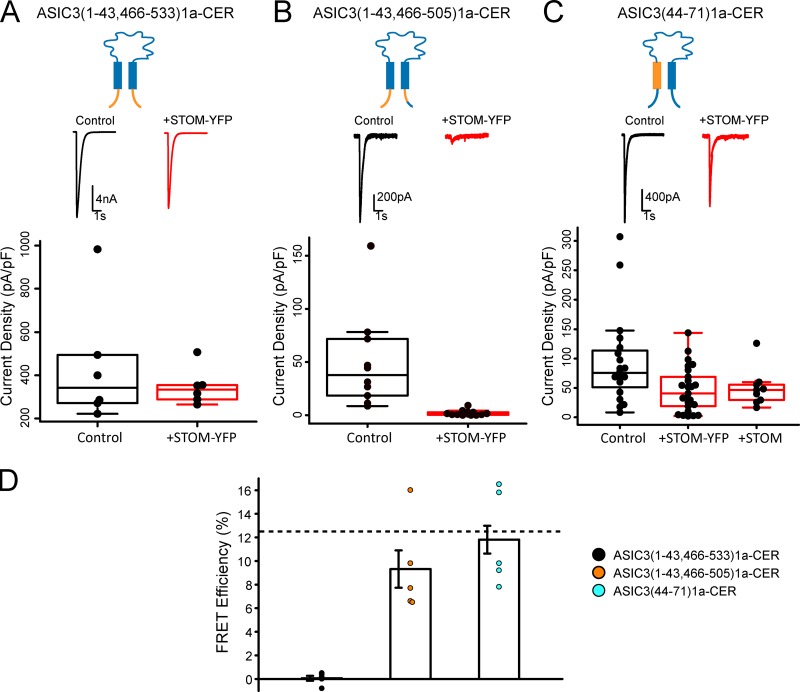Figure 4.
TM1 of ASIC3, but not the N-terminus, is important for STOM regulation. (A–C) Each column shows the cartoon of the chimera being tested. Each column has a representative set of pH 5.5–evoked currents of the indicated chimeric channel alone (black) and cotransfected with STOM (red) and shows a boxplot of the current density of the channel with and without STOM coexpression. (A) Average current densities for ASIC3(1–43,466-533)1a-CER in the absence (black) and presence (red) of STOM-YFP were 334.2 ± 44.2 pA/pF (n = 5) and 314.0 ± 15.9 pA/pF (n = 5), respectively. (B) Average current densities for ASIC3(1–43,466-505)1a-CER in the absence (black) and presence (red) of STOM-YFP were 37.6 ± 7.9 pA/pF (n = 9) and 1.4 ± 0.4 pA/pF (n = 11), respectively. (C) Average current densities for ASIC3(44–71)1a-CER in the absence (black) and presence (red) of STOM-YFP or untagged STOM (red) were 72.8 ± 9.0 pA/pF (n = 18), 47.3 ± 7.5 pA/pF (n = 25), and 40.2 ± 5.0 pA/pF (n = 8), respectively. (D) Plot of the FRET efficiency between each chimera and STOM-YFP. Average FRET efficiency of ASIC3(1–43,466-533)1a-CER + STOM-YFP = 0.1 ± 0.2% (n = 5). Average FRET efficiency of ASIC3(1–43,466-505)1a-CER + STOM-YFP = 9.3 ± 1.6% (n = 5). Average FRET efficiency of ASIC3(44–71)1a-CER + STOM-YFP = 11.8 ± 1.2% (n = 8). Dotted line in FRET plots corresponds to control WT ASIC3-CER/STOM-YFP FRET signal replotted from Fig. 1 E for comparison. Data are given as mean ± SEM.

